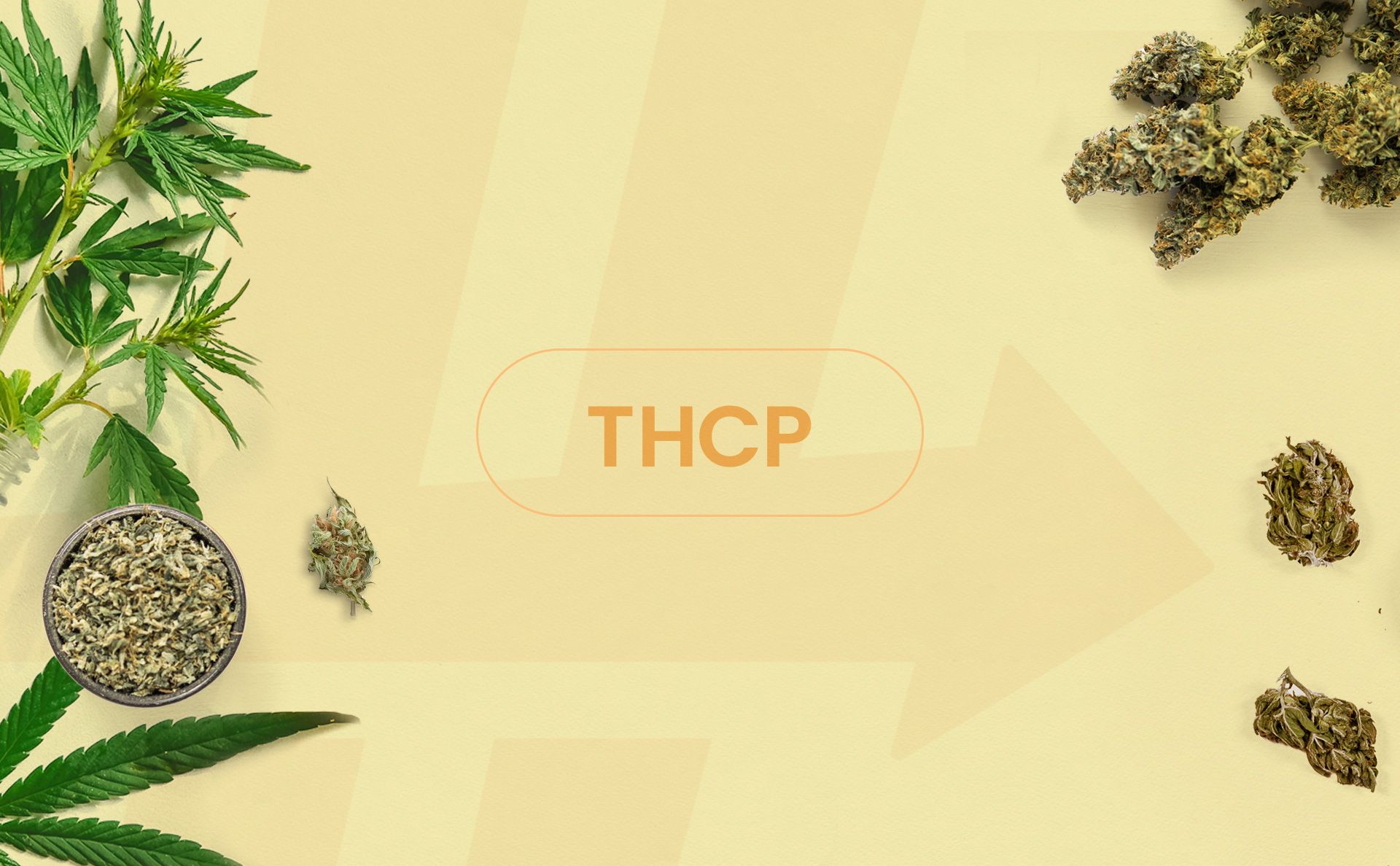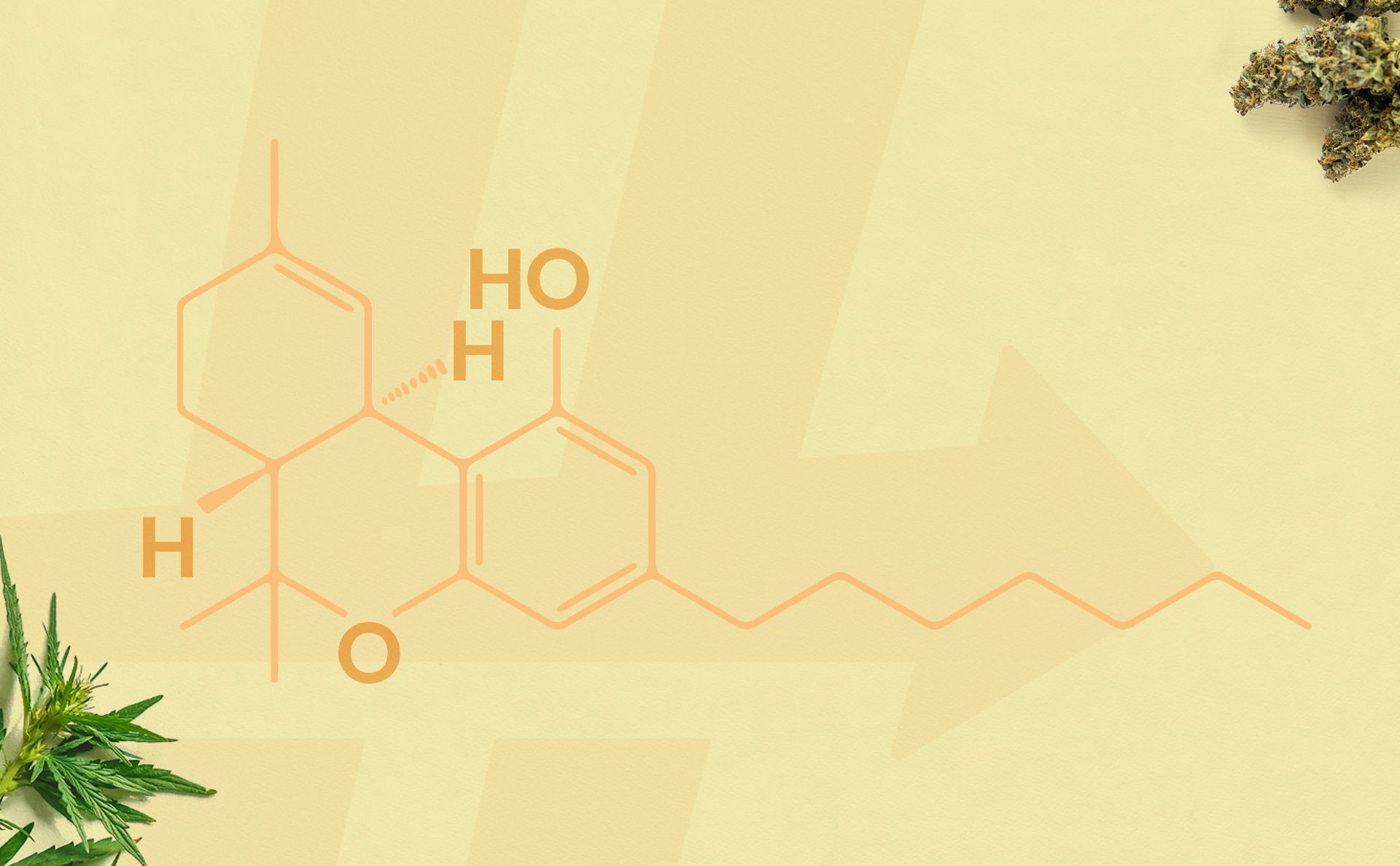THCP
In this chapter of our cannabinoids guide, we discuss the effects and potential benefits of THCP, as well as the most notable study conducted on this newly-discovered compound.

What is THCP?
Tetrahydrocannabiphorol, abbreviated as THCP, is a phytocannabinoid discovered in 2019 by an Italian research group. This research group combined cutting-edge techniques in high-resolution mass-spectrometry and liquid chromatography analysis. They found that THCP differs from THC in that it has a 7-carbon tail, instead of the usual 5, dramatically increasing its psychoactive properties.
These fascinating technologies are designed to allow scientists to analyze plant matter more precisely, and determine the compounds and structures they’re actually looking at. Up until recently, studies using these technologies have been done for decades in the commercial agriculture and pharmaceutical fields to identify and characterize compounds in plants and medicine.
The main reason it took so long to identify THCP is because of its incredible rarity in cannabis plants. Naturally-occurring THCP is about 1300 times less common than delta-9 THC, at least in the government-supplied cannabis cultivar (called “FM2”) analyzed by the Italian researchers. They also identified and replicated CBDP at the same time, which similarly has a 7-carbon tail.

In order to confirm the natural existence of THCP, they also needed to reproduce it semisynthetically from CBD. Consequently, this is also how we can now have legal, hemp-derived THCP products on the shelves.
However, there are conflicting viewpoints on retail, semisynthetic cannabinoids like THCP and delta-8 THC. Both of which appeal to retail consumers in cannabis-illegal states because they cause effects that mimic delta-9 THC. Cannabis advocates say these hemp-derived cannabinoids are protected under the 2018 Farm Bill, as long as products contain less than 0.3% THC. However, prohibitionists assert that THCP should be considered an illegal substance, since federal law technically dictates that THC and its closest analogues are controlled substances.
The European Union and Italy place different laws on cannabinoids than we do here in the U.S., which afforded the Italian research team the ability to conduct this study on military-sanctioned cannabis. In the study, the researchers discovered THCP almost by accident. Subsequently, THC-P vaporizer cartridges and edible products are gaining in popularity, like delta-8 THC.
According to the researchers, THCP could be useful for medical cannabis purposes, because of this unique side-chain in the cannabinoid’s molecular structure. Regular THC has five links in this side chain, while the researchers found THCP has seven. This means that the molecular structure of THCP appears to bind CB1 receptors up to 33 times stronger than THC does.
Effects of THCP
You can expect THCP products to be more intense in psychotropic effects than delta-9 THC. The binding capacity doesn't exactly translate to 33 times the strength, because there are several variables in between, however many anecdotal reports estimate the strength anywhere to be anywhere from 2 to 10 times as strong as THC.
The anecdotal reports roughly correlate with the study findings. Researchers only required giving mice half the dose of THCP to observe the same effects as a full dose of THC. Since mice can't talk about being super high, computer studies and the tetrad test are used to determine cannabimimetic activity similar to THC.
THCP almost acts as a full CB1 and CB2 agonist, as opposed to the partial agonist actions of delta 9 THC. This also makes THCP more difficult to turn off, so you can also expect the high to last much longer as well as stronger. Because of the high binding affinity, THCP should only be reserved for advanced consumers or those with severe medical needs and high tolerance.

What the expert says...
Dr. Abraham Benavides
"THCP is a new and powerful psychotropic cannabinoid, with a lot of potential similar to THC but left to be confirmed. Newcomers should stay away from THCP, until they have gained adequate experience with THC products or until clinical studies are publishe"
Potential Benefits of THCP
In the study, THCP was shown to be more active on the brain’s CB1 receptors, which activates the psychotropic component of the endocannabinoid system. In the relatively near future, THCP’s vital new information could likely be used to help patients with already commonly-used applications of THC like:
- Chronic pain
- Muscle spasms
- Epilepsy
- Nausea and vomiting
- Depression
That’s because our CB1 receptors influence psychoactivity, pain, mood, nausea, and dopamine transmission. While the potential is similar to THC, remember that there aren't any clinical studies done to show the full set of potential benefits and side effects of THCP.
As nearly a full CB1 agonist, the high is more intense, longer, and more likely to cause panic or other anxiety symptoms, especially in people who have low tolerance. You may expect the other side effects of excess THC to appear, including:
- Dysphoria
- Cognitive impairment
- Fast heart rate
- Dry mouth and eyes
- Red eyes
- Increased appetite
- Sleepiness
- Fatigue
- Reduced inflammation
A big concern is actually in the quality of production, because THCP products are not regulated like traditional cannabis and dispensaries. Because semisynthetic cannabinoids are messy and require harsh acidic conversion of CBD to make, they can carry many other by-products and solvents with their own unknown health effects. This means you are taking unregulated and understudied THCP products at your own risk.
There is still no clinical evidence to determine exactly how THCP makes you feel, or that THCP actually has more impactful medicinal properties than THC. Dosing THCP also needs to be done much more precisely than other cannabinoids, as it may easily be overdone.
What We Learned: THCP
THCP is yet another exciting cannabinoid that has much potential. Here’s what we learned in our THCP chapter:
- Tetrahydrocannabiphorol, abbreviated as THCP, is a phytocannabinoid that was discovered in 2019 by an Italian research group.
- There are conflicting viewpoints on semisynthetic cannabinoids like THCP and delta-8 THC, both of which may cause effects that mimic Delta-9 THC.
- THCP could be useful for medical cannabis purposes, because of its THC-like activity and its unique side-chain. Regular THC has five links in this side chain, while the researchers found THCP has seven.
- This means that the molecular structure of THCP appears to bind CB1 receptors up to 33 times stronger than THC does
- The actual psychoactive intensity of THCP may vary between twice and ten times as intense per dose, or more, according to the discovery study and anecdotal reports.
- THCP is naturally-occurring but only at a rate about 1300 times less common than delta-9 THC, so retail THCP products must be semisynthetically produced from hemp CBD to be in appreciable quantities and meet legal requirements.
- Retail THCP is semisynthetic and so quality concerns loom in the background. Dubious semisynthetic products may introduce unknown byproducts or solvents that can have unanticipated health effects, so purchase wisely and consume at your own risk.
- There is no clinical evidence yet to determine if or how THCP could have more impactful medicinal properties than THC.
- In the future, THCP’s vital new information – particularly on tolerable, therapuetic dosing – could be used to help patients with many common symptoms and ailments they already take THC for.
You almost did it! Only one chapter remaining to complete the cannabinoids guide! Answer the question below and let’s get to it!
Citations
- Citti, C., Linciano, P., Russo, F., Luongo, L., Iannotta, M., Maione, S., Laganà, A., Capriotti, A. L., Forni, F., Vandelli, M. A., Gigli, G., & Cannazza, G. (2019). A novel phytocannabinoid isolated from Cannabis sativa L. with an in vivo cannabimimetic https://doi.org/10.1038/s41598-019-56785-1
- Coronado-Álvarez, A., Romero-Cordero, K., Macías-Triana, L., Tatum-Kuri, A., Vera-Barrón, A., Budde, H., Machado, S., Yamamoto, T., Imperatori, C., & Murillo-Rodríguez, E. (2021). The synthetic CB1 cannabinoid receptor selective agonists: Putative medicalhttps://doi.org/10.1016/j.pnpbp.2021.110301
- Ebbert, J. O., Scharf, E. L., & Hurt, R. T. (2018). Medical Cannabis. Mayo Clinic Proceedings, 93(12), 1842–1847.https://doi.org/10.1016/j.mayocp.2018.09.005
Test your knowledge, track your progress and earn your badge.
When was THCP discovered?

Dr. Abraham Benavides
Dr. Abraham Benavides is an internationally-recognized cannabis research expert, experienced medical advisor, and full-tuition merit scholar of the George Washington University School of Medicine and Health Sciences. Dr. Abe enjoys helping patients as a writer, educator, and cannabis health coach at the GW Center for Integrative Medicine.